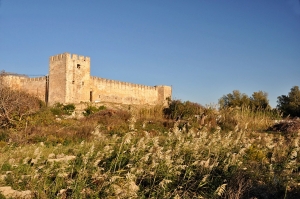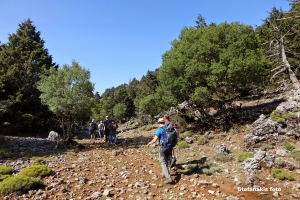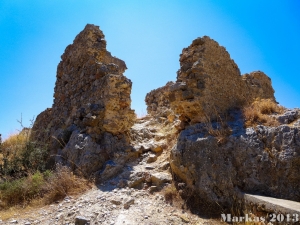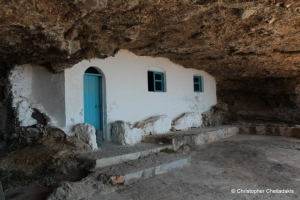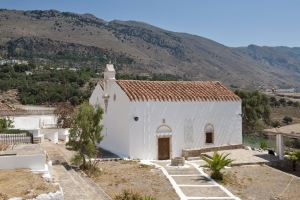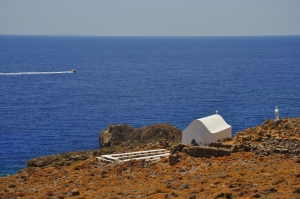Small, well-preserved, leaning on the edge of a desert plain of the Libyan Sea in Sfakia around the mountains, Fragokastelo unfolds even today the skein of history, a story full of memories and mysteries. The "castle of Drosoulites" was built by the Venetians in the period 1371-1374, aiming to protect them from Sfakians, who were led by the six brothers Patsis who constantly bothered occupiers, who could not complete the project.
The canyon Kavis is one of the longest and wildest of Sfakia area and despite located next to Chora Sfakion, it remains unknown to many people who usually just enjoy swimming at Iligas. The riverbed is dry almost always, except after several hours of rain. Apart from the main stream, in Kavis fall other 5 sub-gorges, extremely wild.
The fort of Sfakia (Castel di Sfacia or Sfachia) was built on Kastelli hill, on the eastern edge of Sfakia (Chora Sfakion) town and was the last fort built by the Venetians in Crete. It was built during the 15th-16th century on the site of a previous Byzantine fort. Information about the castle is very poor, but this was mentioned for the first time in documents of 1526.
East of Sfakia, on the beach of Ammoudi, above Ammoudi we meet the church of Agios Haralambos. This is a typical cavernous chapel of the coasts and inland of Sfakia province. It is quite spacious because it is built in a relatively large cave. The location of the cave can be accessed via a short path that starts from the beach, but there is also a road that reaches the place.
The monastery of Panagia Thymiani is located near Sfakia at position Thyme Armi and is one of the most historic sites in Crete. Here on May 29, 1821, the chieftains of Crete preached revolution against the Ottoman Empire. Therefore, the monastery is also called Agia Lavra of Crete (Agia Lavra is a monastery in Peloponnese from where the great Greek Revolution of 1821 started, leading to the liberation of Greece).
Between Loutro Sfakion and the famous beach of Glyka Nera, at Perlovakia, we meet the white brushed chapel of the Holy Cross (Timios Stavros) where a big feast takes place on September 14th every year.










